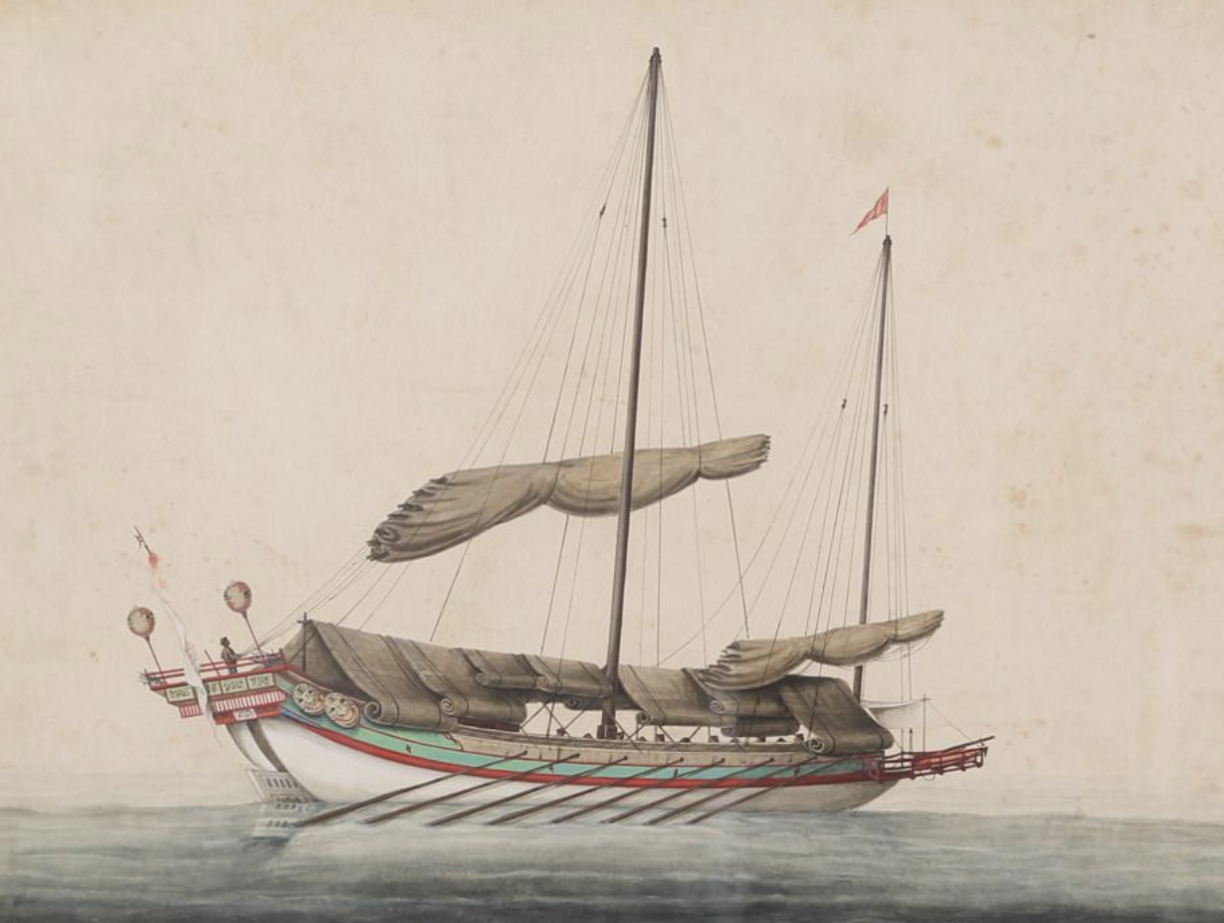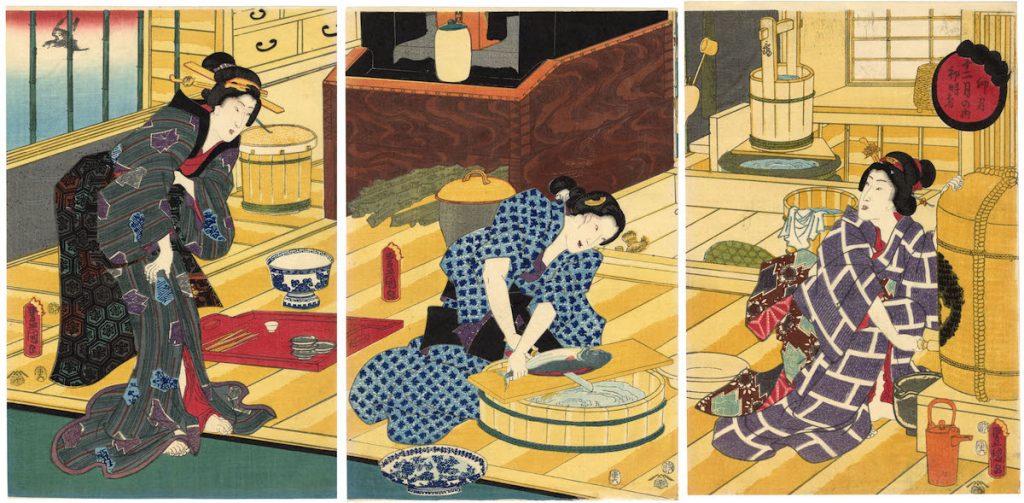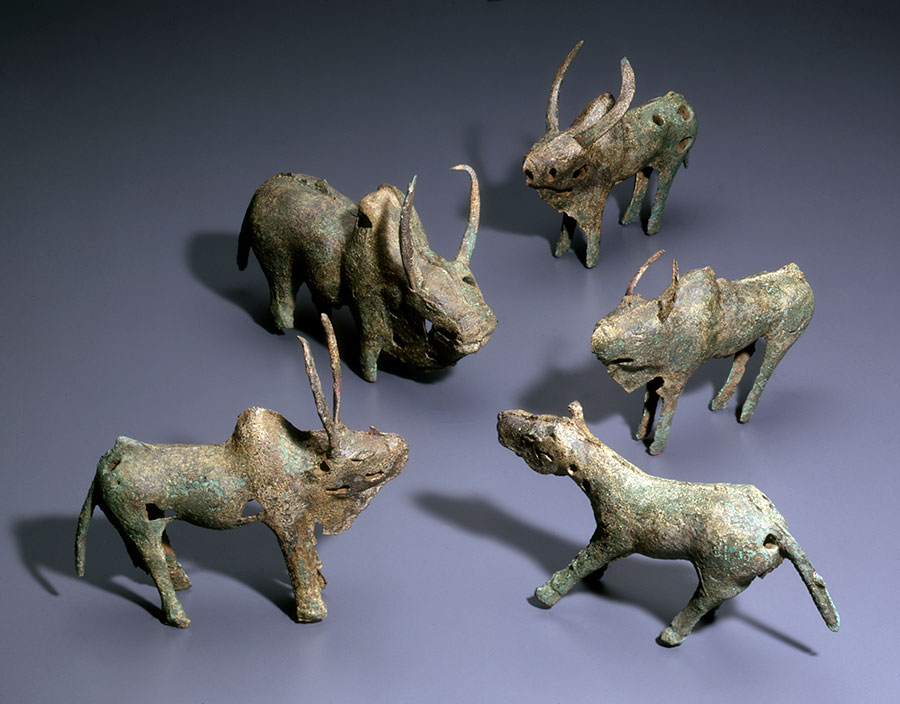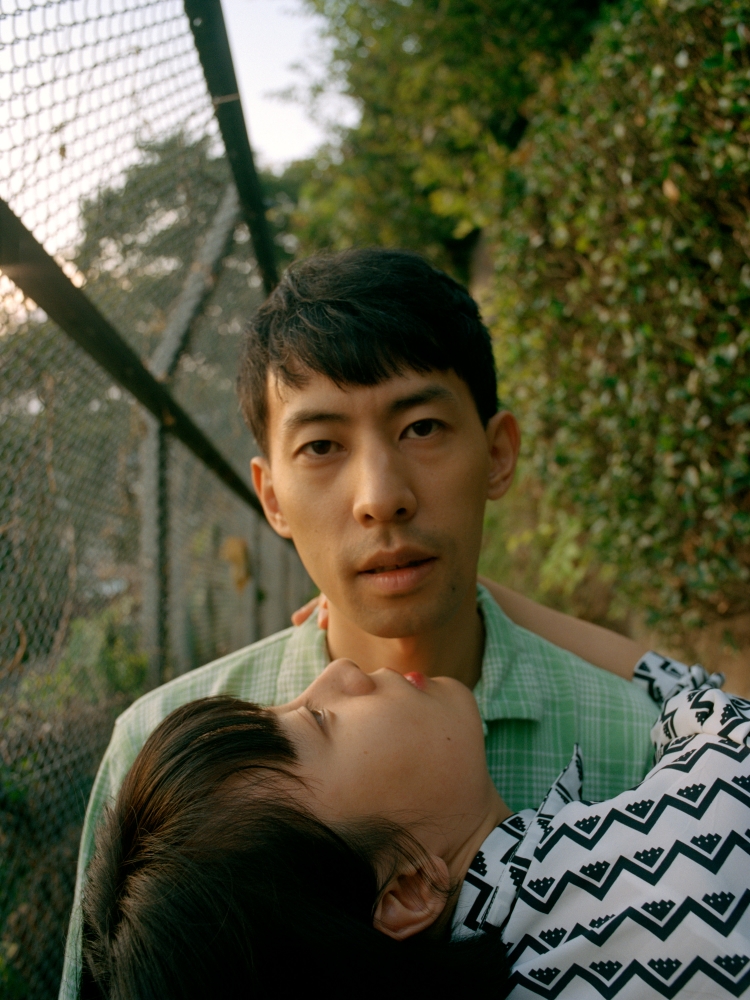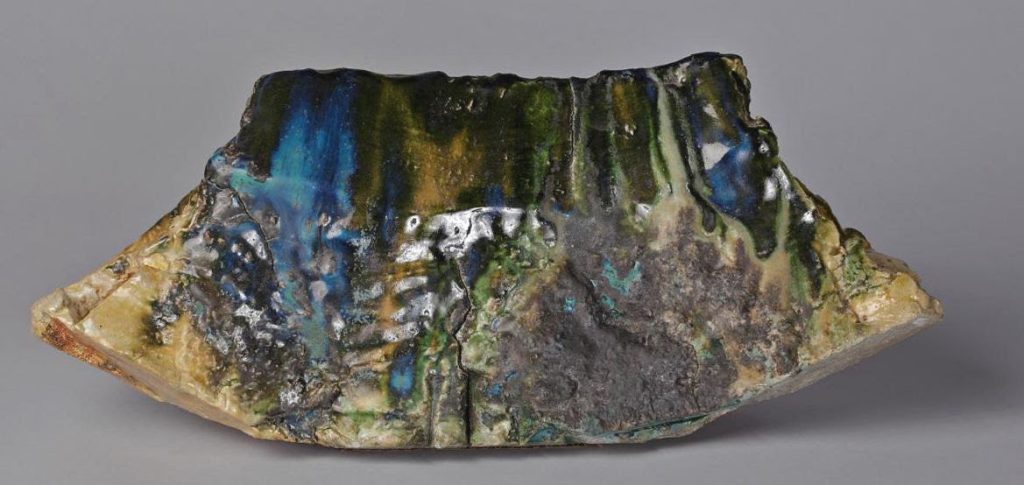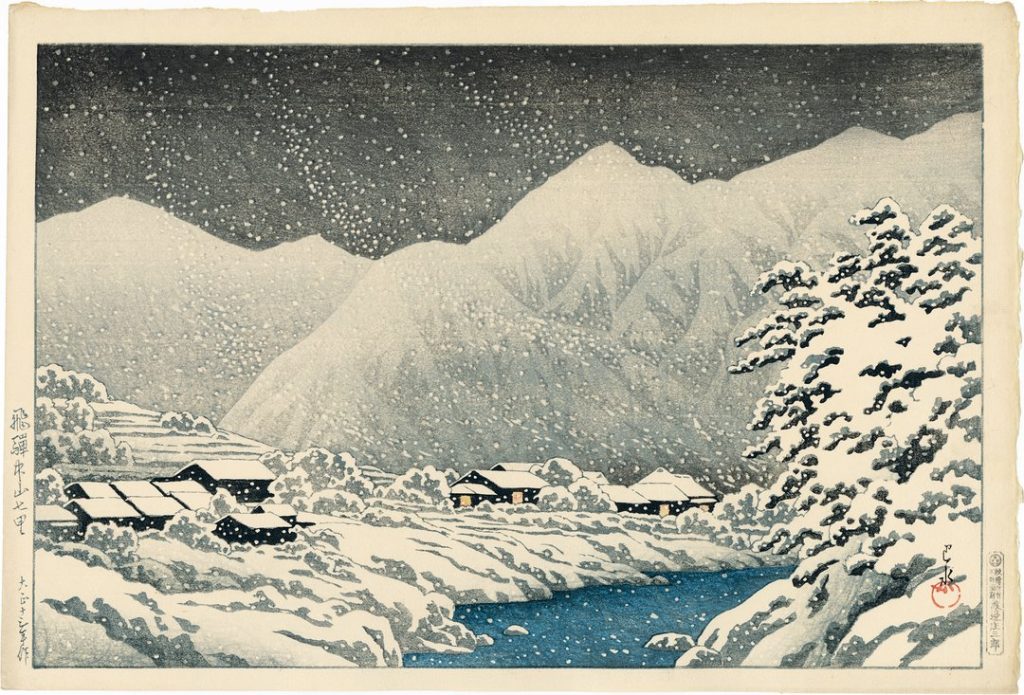Four bronze long-horned bulls and a horse, Dian kingdom, Yunnan, Western Han dynasty, 3rd-1st century B.C. Lengths: 17.8 to 24.8 cm. (7 to 9 3/4 in.), courtesy of Kaikodo
Looking forward to a less eventful year and wishing you a happy, healthy, safe and prosperous New Year of the Ox!
The Chinese zodiac is a 12-year cycle where each year is represented by an animal, and 2021 is the year of the dependable Ox. According to a myth about how the order of the twelve animals of the Chinese zodiac calendar was established, the ox came in second in a race to reach the emperor’s party. He had been the frontrunner, but just before the finish line, the rat asked him for a ride across the river and then got off his back and claimed first place. A very trustworthy beast of burden and indispensable in an agricultural society, the ox has always been much valued in Asia. Known for being hardworking and reliable, oxen have frequently been portrayed in Chinese and Japanese works of art.
In addition, each year of the Chinese calendar is associated with one of the ten elements, such as fire, water, air. 2021 is the Metal Ox year so this group of four bronze long-horned bulls and a horse is most fitting. From the Dian kingdom in Yunnan and dating to the Western Han dynasty (3rd-1st century BC), these pieces attest to the ox’s long historical importance in Chinese life.
The approach is more fanciful in a Japanese print by Utagawa Kunisada (Toyokuni III), Fifty-three Stations Along the Tokaido: View of Kanbara, from a bijin landscape series, in which a beautiful young woman is shown riding an ox in a snowbound landscape.

Utagawa Kunisada (Toyokuni III) 1786-1865, Fifty-three Stations Along the Tokaido: View of Kanbara, signed Kochoro Kunisada ga, ca. 1838, chuban tate-e 9 7/8 by 7 3/8 in., 25 by 18.7 cm, courtesy of Scholten Japanese Art
Oxen have been depicted in paintings, stone sculpture, wood, jade and other materials as well as in pottery and porcelain. A perennial favorite throughout these media is the image of a boy riding an ox or a water buffalo, and here is a classic porcelain example of that, a Chinese blanc de chine water dropper in the shape of a boy riding an ox, from the Kangxi period/ early 18th century.
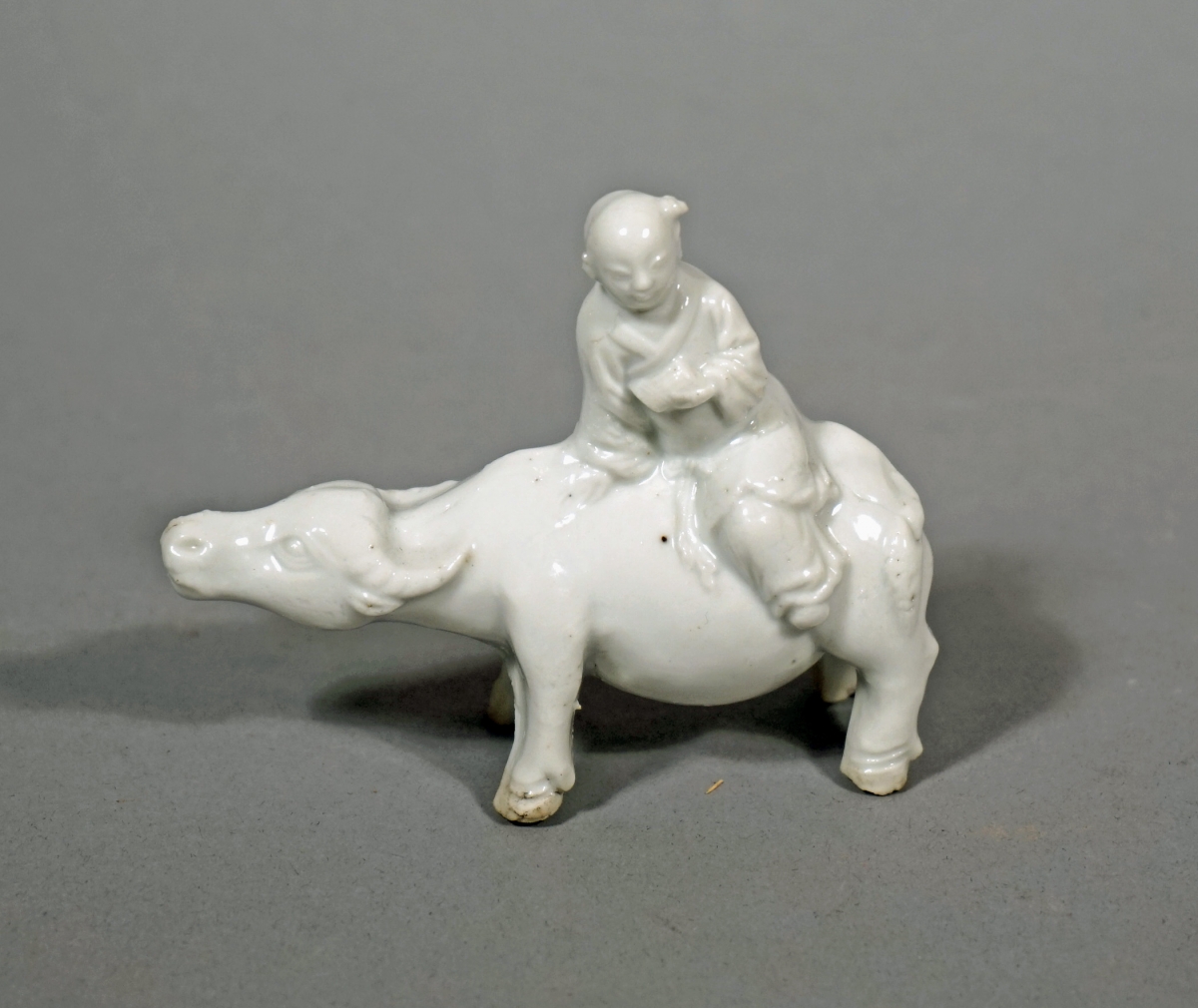
Chinese blanc de chine water dropper in the shape of a boy riding an ox, Kangxi period/early 18th century, Height: 3 inches (7.5 cm) Length: 3 1/2 inches (9 cm), courtesy of Ralph M. Chait Galleries
